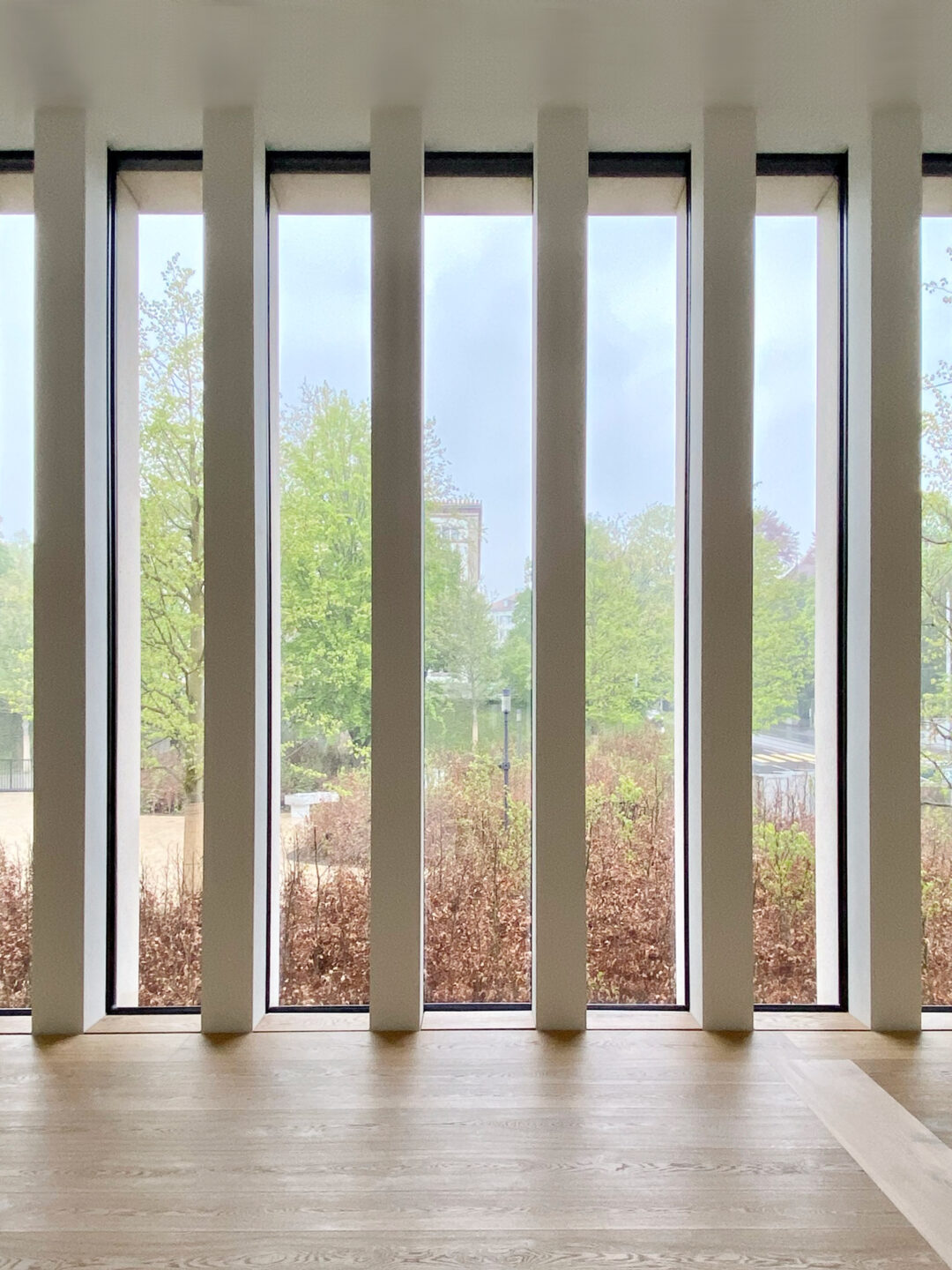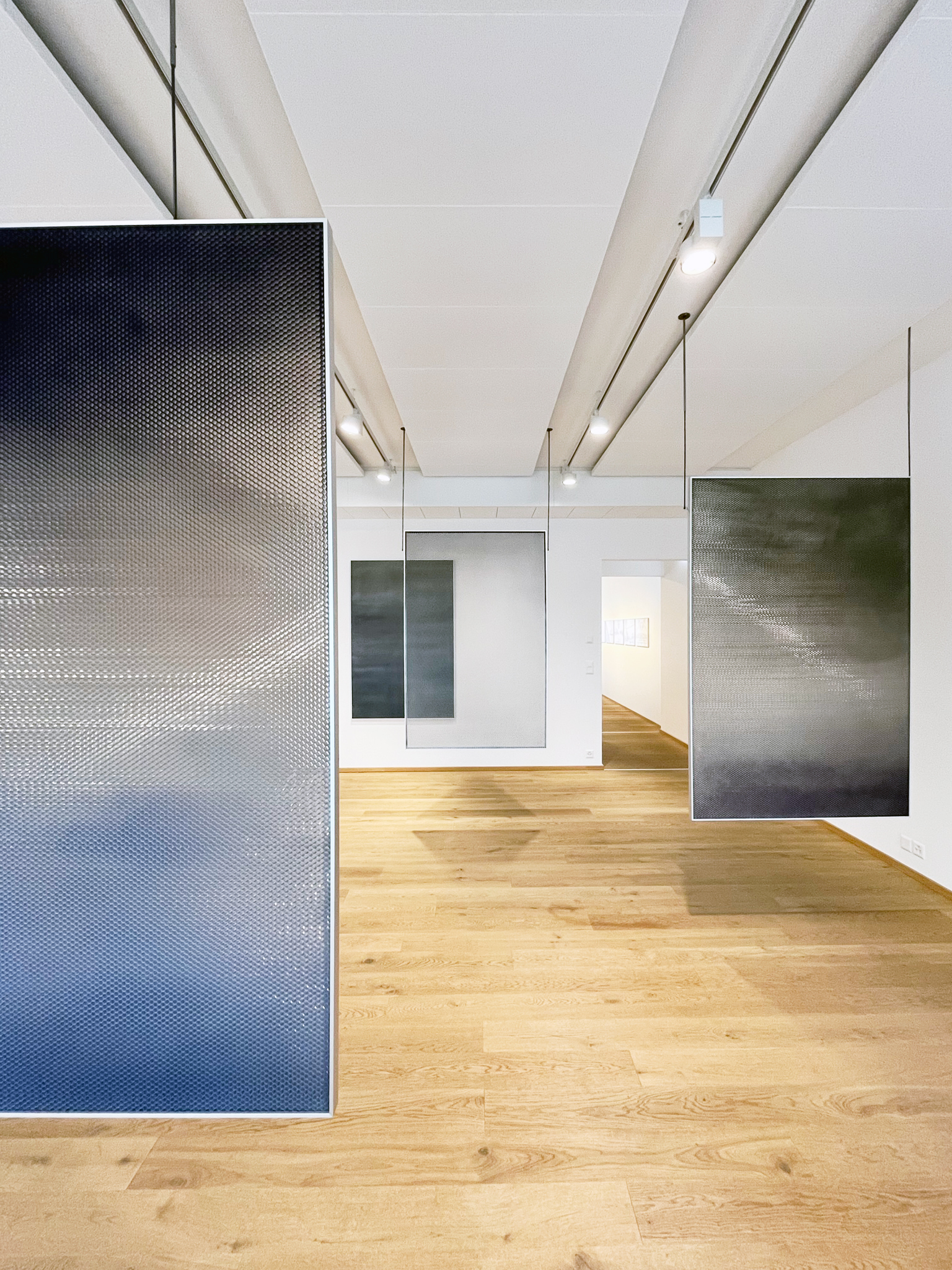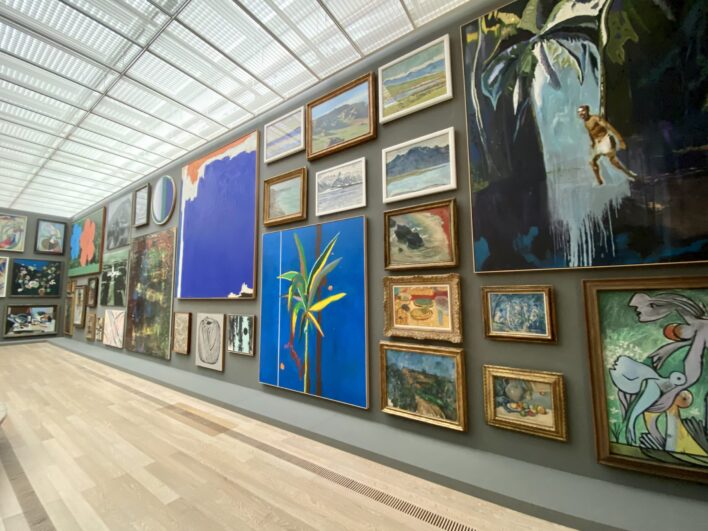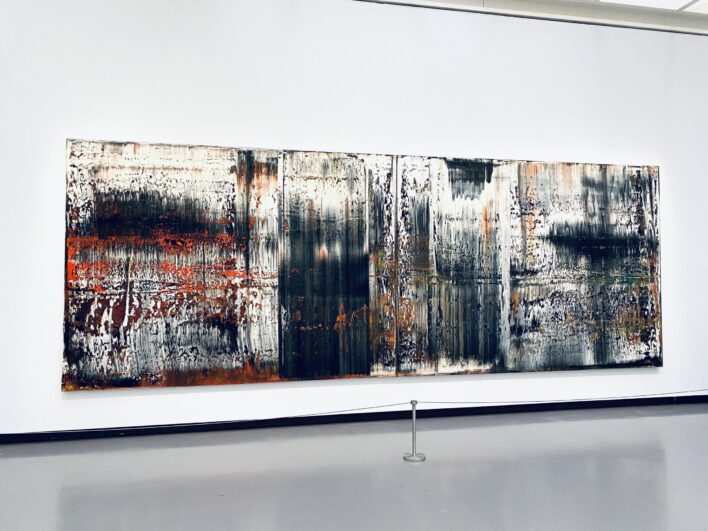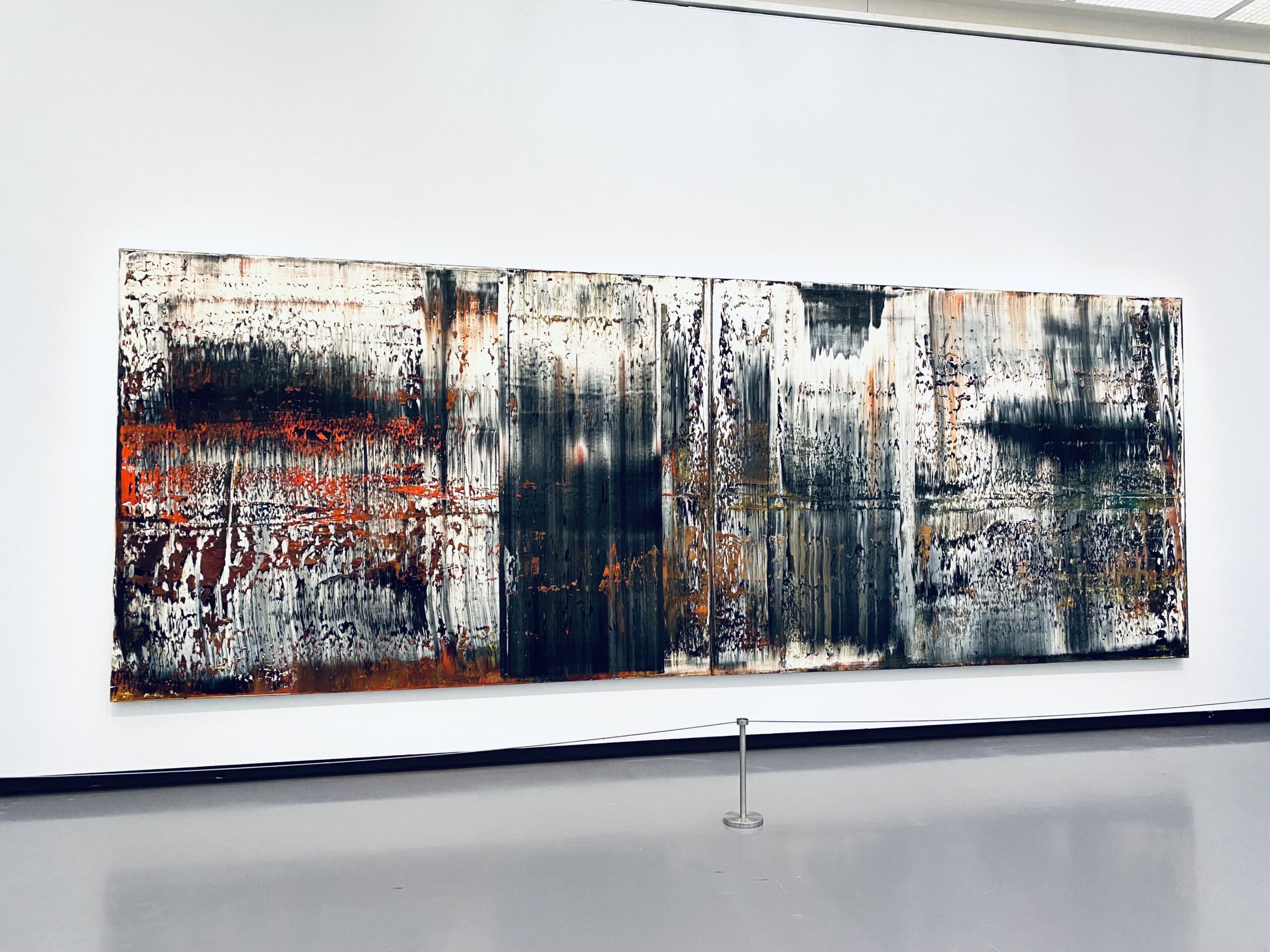The long awaited extension of the Kunsthaus Zürich museum, designed by David Chipperfield Architects Berlin officially opened its doors to the public in Autumn 2021.
Located in Heimplatz square, the new extension provides additional exhibition space, making the Kunsthaus Zürich the largest and most dynamic art museum in Switzerland!
The Kunsthaus is now composed of four buildings from different eras: the Moser building that dates back to 1910, the Pfister building constructed in 1958, the Erwin Müller built in 1976 and finally the recent Chipperfield extension.
The monolithic shape of the facade creates a modern urban edge and becomes an integral part of the square, while the Jura limestone echoes the traditional public buildings in the area, allowing it to blend within the urban context. The stone is placed in regular intervals around the building and is arranged in vertical fins, protruding from the facade. It is also disrupted by large window openings which flood the interior spaces with light.
The large foyer on the ground floor welcomes the visitors and spans the full length of the building, creating a link between Heimplatz and the Garden of Art and housing all the public facilities such as the “Ballroom” event hall, the library and the boutique.
The focal point of the building is the large opened staircase which provides access to the galleries on the two upper floors and guides the visitors.
The load-bearing structure of the building, made of recycled reinforced concrete, is exposed completely throughout the building and dressed partially according to the areas, with a minimal material palette such as wood, brass tubes and marble detailing.
Each gallery on the upper floors has a unique shape and dedicated material palette in order to create singular atmospheres, allowing a diverse journey to the visitors.

The free-standing building is directly connected to the Moser main building by an underground passage, creating a direct link with the museum’s heritage.
In the Moser building, “The 2000 Sculpture” by Walter De Maria is exposed until February 20, 2022 – it comprises a total of two thousand white plaster rods.
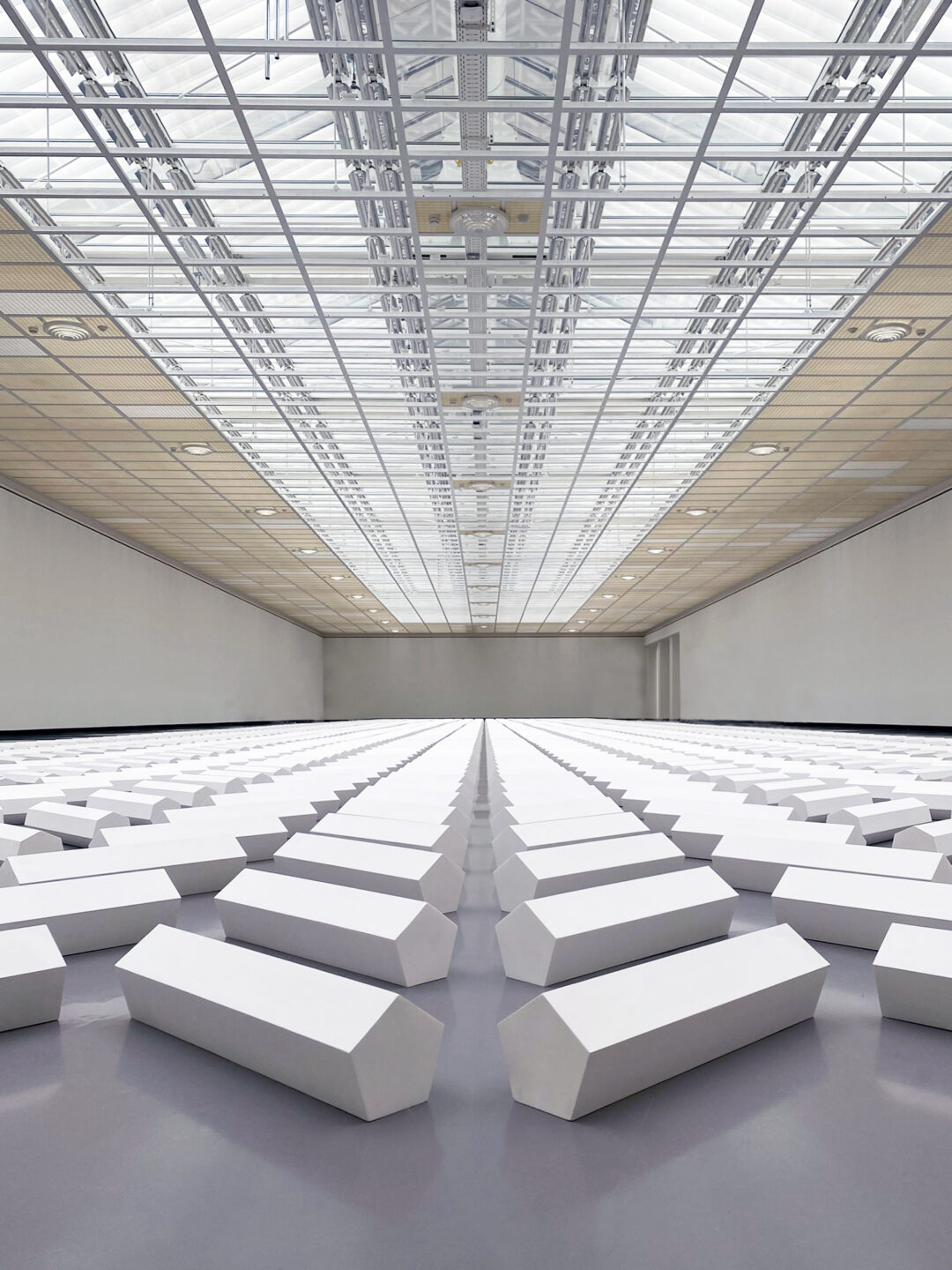
Other recent projects by the architecture studio include the West Bund Museum in Shanghai and the Zhejiang Museum of Natural History in China.
Text and photographs by Maureen Bouygues.


